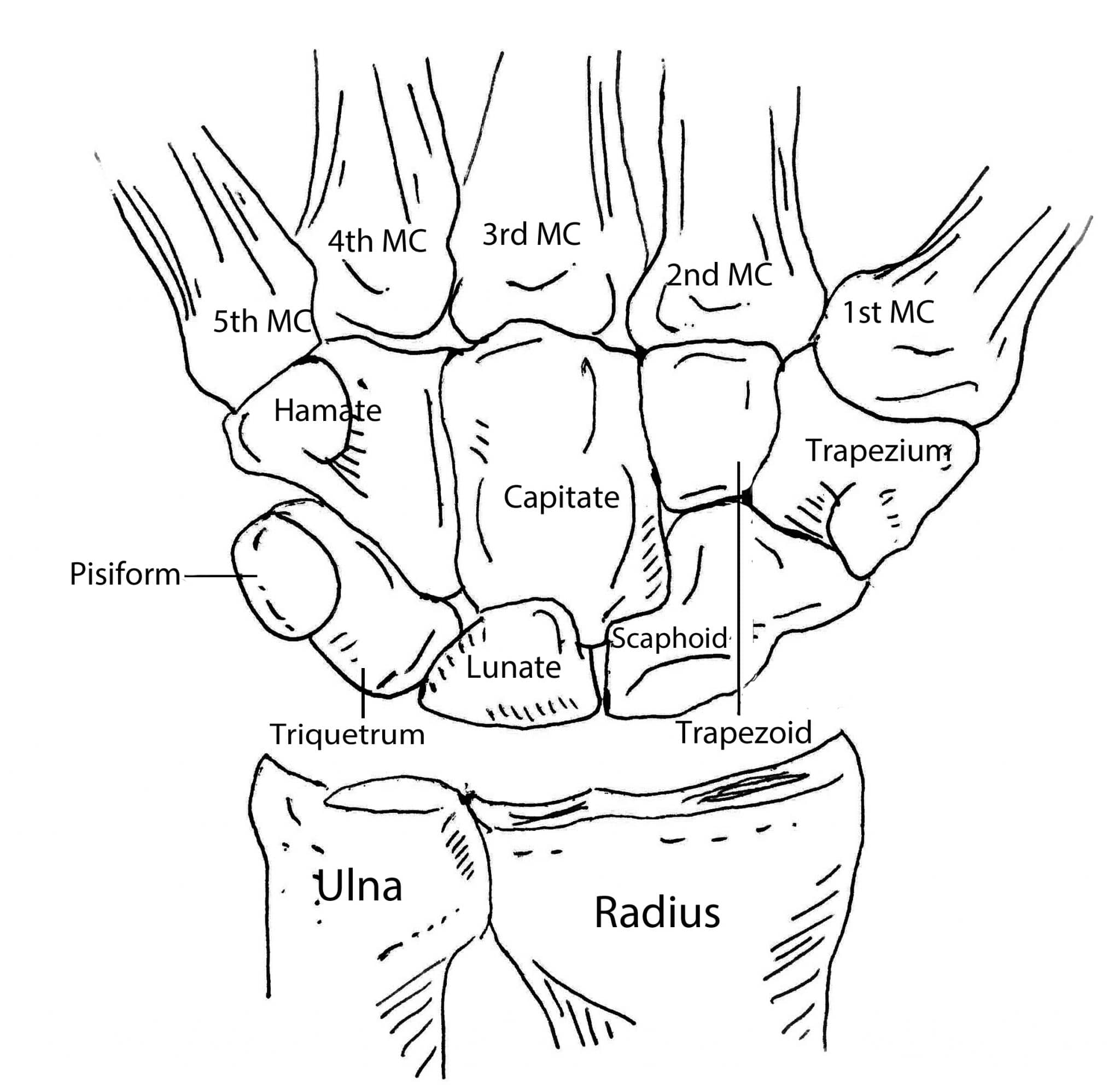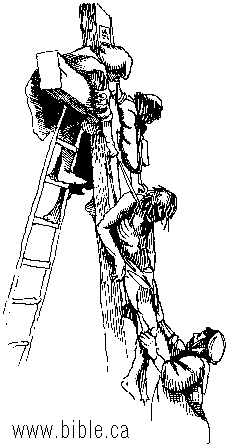So here's a treatise by former Bethelite Randall Watters.
History of crucifixion and archeological proof of the cross, as opposed to a stake.
Britannica reports that the first historical record of Crucifixion was about 519 BC when "Darius I, king of Persia, crucified 3,000 political opponents in Babylon" (Encyclopaedia Britannica, crucifixion)
Some further detail is given in "The Eerdman's Bible Dictionary", Rev. Ed., 1975:
CROSS ... Crucifixion is first attested among the Persians (cf. Herodotus,
Hist. i.128.2; iii.132.2, 159.1), perhaps derived from the Assyrian impalement. It was later employed by the Greeks, especially Alexander the Great, and by the Carthaginians, from whom the Romans adapted the practice as a punishment for slaves and non-citizens, and occasionaly for citizens guilty of treason. Although in the Old Testament the corpses of blasphemers or idolaters punished by stoning might be handged "on a tree" as further humiliation (Deut. 21:23), actual crucifixion was not introduced in Palestine until Hellenistic times. The Seleucid Antiochus IV Epiphanes crucified those Jews who would not accept hellenization (Josephus
Ant. xii.240-41; cf 1 Macc. 1:44-50).
Archeological proof of the cross, as opposed to a stake.
Historical findings have substantiated the traditional cross. One finding is a graffito1 dating to shortly after 200 A.D., taken from the walls of the Roman Palatine. It is a drawing of a crucified ass; a mockery of a Christian prisoner who worships Christ. The Romans were no doubt amused that Christians worshiped this Jesus whom they had crucified on a cross.
| In June of 1968, bulldozers working north of Jerusalem accidentally laid bare tombs dating from the first century B.C. and the first century A.D. Greek archeologist Vasilius Tzaferis was instructed by the Israeli Department of Antiquities to carefully excavate these tombs. Subsequently one of the most exciting finds of recent times was unearthed - the first skeletal remains of a crucified man. The most significant factor is its dating to around the time of Christ. The skeleton was of a man named Yehohanan son of Chaggol, who had been crucified between the age of 24 and 28. Mr. Tzaferis wrote an article in the Jan/Feb. 1985 issue of the secular magazine Biblical Archaeology Review (BAR), and here are some of his comments regarding crucifixion in Jesus' time:
At the end of the first century B.C., the Romans adopted crucifixion as an official punishment for non-Romans for certain limited transgressions. Initially, it was employed not as a method of execution, but only as a punishment. Moreover, only slaves convicted of certain crimes were punished by crucifixion. During this early period, a wooden beam, known as a furca or patibulum was placed on the slave's neck and bound to his arms. |
...When the procession arrived at the execution site, a vertical stake was fixed into the ground. Sometimes the victim was attached to the cross only with ropes. In such a case, the
patibulum or crossbeam, to which the victim's arms were already bound, was simply affixed to the vertical beam; the victim's feet were then bound to the stake with a few turns of the rope.
If the victim was attached by nails, he was laid on the ground, with his shoulders on the crossbeam. His arms were held out and nailed to the two ends of the crossbeam, which was then raised and fixed on top of the vertical beam. The victim's feet were then nailed down against this vertical stake.
In order to prolong the agony, Roman executioners devised two instruments that would keep the victim alive on the cross for extended periods of time. One, known as a
sedile, was a small seat attached to the front of the cross, about halfway down. This device provided some support for the victim's body and may explain the phrase used by the Romans, "to sit on the cross." Both Eraneus and Justin Martyr describe the cross of Jesus as having five extremities rather than four; the fifth was probably the
sedile. (p. 48,49)
In a followup article on this archeological find in the Nov/Dec. issue of BAR, the statement is made:
According to the (Roman) literary sources, those condemned to crucifixion never carried the complete cross, despite the common belief to the contrary and despite the many modern re-enactments of Jesus' walk to Golgotha. Instead, only the crossbar was carried, while the upright was set in a permanent place where it was used for subsequent executions. As the first-century Jewish historian Josephus noted, wood was so scarce in Jerusalem during the first century A.D. that the Romans were forced to travel ten miles from Jerusalem to secure timber for their siege machinery. (p. 21)
Similar are the details mentioned under "Cross" in the
New International Dictionary of New Testament Theology:
It is certain only that the Romans practised this form of execution. But is is most likely that the
stauros had a transverse in the form of a crossbeam. Secular sources do not permit any conclusion to be drawn as to the precise form of the cross, as to whether it was the
crux immissa (+) or
crux commissa (T). As it was not very common to affix a
titlos (superscription, loanword from the Lat.
titulus), it does not necessarily follow that the cross had the form of a
crux immissa.
There were two possible ways of erecting the
stauros. The condemned man could be fastened to the cross lying on the ground at the place of execution, and so lifted up on the cross. Alternatively, it was probably usual to have the stake implanted in the ground before the execution. The victim was tied to the crosspiece, and was hoisted up with the horizontal beam and made fast to the vertical stake. As this was the simpler form of erection, and the carrying of the crossbeam (
patibulum) was probably connected with the punishment for slaves, the
crux commissa may be taken as the normal practice. The cross would probably have been not much higher than the height of a man. (Vol. 1, p. 392)
Other archeological finds:
Aside from the most recent discoveries, there are a few others of interest we will note. Here is one involving a discovery in 1873:
In 1873 a famous French scholar, Charles Clermant-Ganneau, reported the discovery of a burial chamber or cave on the Mount of Olives. Inside were some 30 ossuaries (rectangular chests made of stone) in which skeletal remains were preserved after their bodies had disintegrated. . . . One (ossuary) had the name "Judah" associated with a cross with arms of equal length. Further, the name "Jesus" occurred three times, twice in association with a cross. . . .
It would be unlikely that Christian Jews would have been buried in that area after 135 A.D. since the Romans forbade Jews to enter Aelia Capitolina . . . after the second Jewish revolt. (from
Ancient Times, Vol. 3, No. 1, July 1958, p. 3.)
In 1939 excavations at Herculaneum, the sister city of Pompeii (destroyed in 78 A.D. by volcano) produced a house where a wooden cross had been nailed to the wall of a room. According to
Buried History, (Vol. 10, No. 1, March 1974 p. 15):
Below this (cross) was a cupboard with a step in front. This has considered to be in the shape of an ara or shrine, but could well have been used as a place of prayer. . . . If this interpretation is correct, and the excavators are strongly in favor of the Christian significance of symbol and furnishings, then here we have the example of an early house church.
In 1945 a family tomb was discovered in Jerusalem by Prof. E.L. Sukenik of the Museum of Jewish Antiquities of the Hebrew University. Prof. Sukenik is the world's leading authority on Jewish ossuaries. Note his findings:
Two of the ossuaries bear the name "Jesus" in Greek. . . . The second of these also has four large crosses drawn. . . . (Prof. Sukenik) concluded that the full inscriptions and the crosses were related, being expressions of grief at the crucifixion of Jesus, being written about that time. . . . Professor Sukenik points out . . . (that) the cross may represent a "pictorial expression of the crucifixion, tantamount to exclaiming `He was crucified!'" As the tomb is dated by pottery, lamps and the character of the letters used in the inscriptions--from the first century B.C. to not later than the middle of the first century A.D. this means that the inscriptions fall within two decades of the Crucifixion at the latest. (
Ancient Times, Vol. 3, No. 1, July 1958, p. 35. See also Vol. 5, No. 3, March 1961, p. 13.)
(Refuting Jehovah's Witnesses, by Randall Watters)






